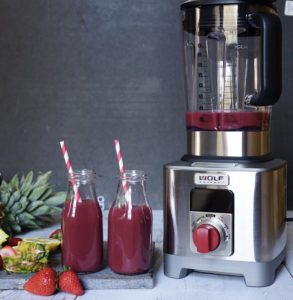
Green curry over rice was one of the most satisfying dishes in Thailand that didn’t leave me feeling like I overate. The flavors of the curry were complex and bold, yet the dish itself was satisfyingly simple. It contained multiple types of eggplant, such as Thai eggplant, a golf-ball sized squash with a light green exterior and mild flavor. Thai eggplant was the perfect vehicle for the various flavors emanating from the curry paste: lemongrass, coriander and kaffir lime to name a few. Green curry also contained pea eggplants, which were slightly larger than fresh peas and had a powerful yet slightly bitter flavor. The curry often contained chicken and was always served with rice.
During our market trip with the Basil Cookery School in Chiang Mai, I not only learned about the different types of eggplant used in Thai cooking, but also the different types of ginger (Thai ginger is known as “galangal”) and other spices. Although the marriage of all of these ingredients is important, the uniqueness of kaffir is a flavor that you shouldn’t leave out if you attempt to make curry at home. We used the kaffir lime skin in the curry paste which is basically lime zest, but with exponentially more flavor. Fresh kaffir lime is one thing that you cannot buy here, but I was able to buy fresh kaffir leaves. These are akin to bay leaves in that they are packed with flavor but they don’t break down, even with incessant pounding in a mortar and pestle. I also added kaffir leaves to the curry as it simmered. Just remember to take the leaves out before serving it.



So, I attempted to recreate green curry at the Thai dinner party I recently hosted. Green curry and red curry are quite similar. The main difference is that green curry paste uses fresh green chilies, while red curry paste uses dried and soaked chilies. Also, green curry typically contains several types of eggplant while red curry contains bamboo shoots. Otherwise, the process to make them is nearly identical. You make a paste by grinding the following ingredients in a mortar and pestle: coriander seeds, pepper corns, cumin, coriander root, lemongrass, kaffir lime skin, galangal, garlic, shallot and chilies. Once you have a paste, you heat oil in a wok, add the paste, coconut milk, chicken, fish sauce, palm sugar and kaffir leaves and simmer until it’s done.


I was able to locate pretty much all of the ingredients at the Bangkok Center Grocery in NYC’s Chinatown. I even found Thai eggplant and flash-frozen coconut milk which “tastes just like Thailand” the owner of Bangkok Center Grocery confidently told me.
When I attempted to make green curry, I got tripped up with one of the initial steps: grinding the ingredients with a mortar and pestle. I think that the time crunch was my biggest pitfall, as I hastily attempted to make a paste. I knew that I did not have a paste, but it smelled so wonderfully fragrant and my dinner guests were looking at me like “Are we ever going to eat?” So I made the brash decision to just put the near-paste in the skillet. I added the amazingly fresh coconut milk, chicken and the other ingredients. I tasted it and was shocked as it truly did taste just like Thailand. I served it to my guests and didn’t have any myself, and instead went back to the kitchen area to prepare the Pad Thai.
The flavor of my green curry may have been just like Thailand, but I learned an important lesson about curry paste. Do not stop pounding until you have a paste. Many of the ingredients in the curry paste like lemongrass stalks and galangal are not soft, and cooking them won’t help soften them. If you don’t want to be picking out little hard bits of lemongrass that end up your plate, make a paste. Use a food processor if you have to. Just keep pounding.
The next time I attempted to make a curry paste, I tried red curry instead of green. I figured that since the red curry paste uses dried then soaked chilies, it would be easier to dissolve the ingredients in my mortar and pestle. I’m not sure if it was actually easier, or if I was just making the red curry paste in a more relaxed environment, but I succeeded at making a real curry paste with no hard bits and pieces. So, I’m wrapping up my week of recreating some of my favorite Thai dishes, but I’m sure I’ll be back at it again soon. Once mangoes are in season, I’m sure I’ll be tempted to make mango sticky rice.

Did you make this receipe?

Share this recipe






